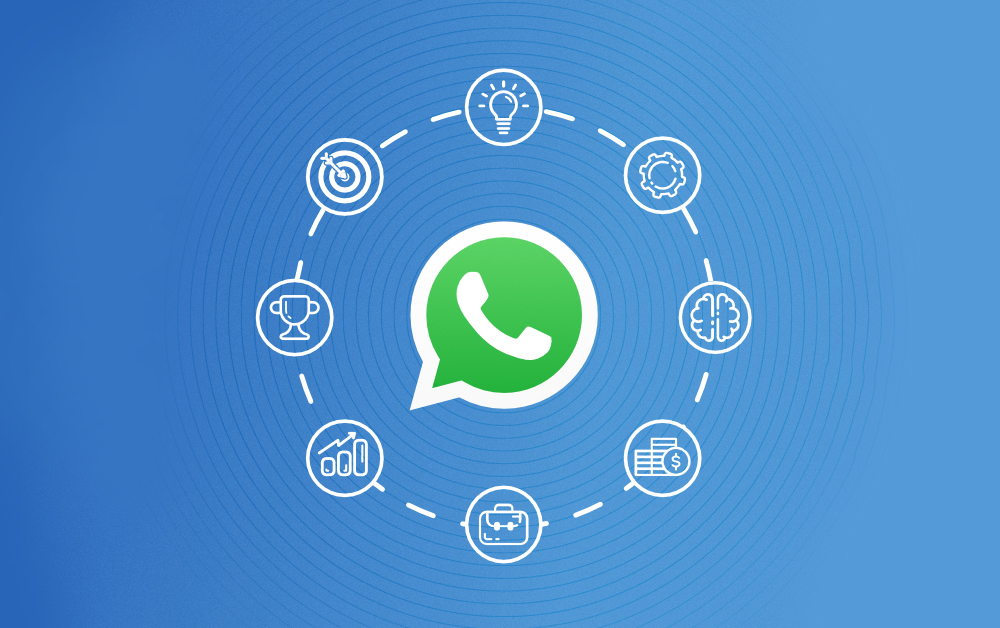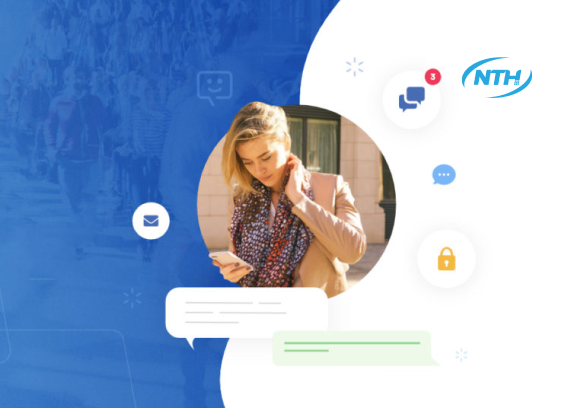Industry News
Why Omnichannel Messaging is a Game Changer in Today’s Business Communication
12.01.2023.
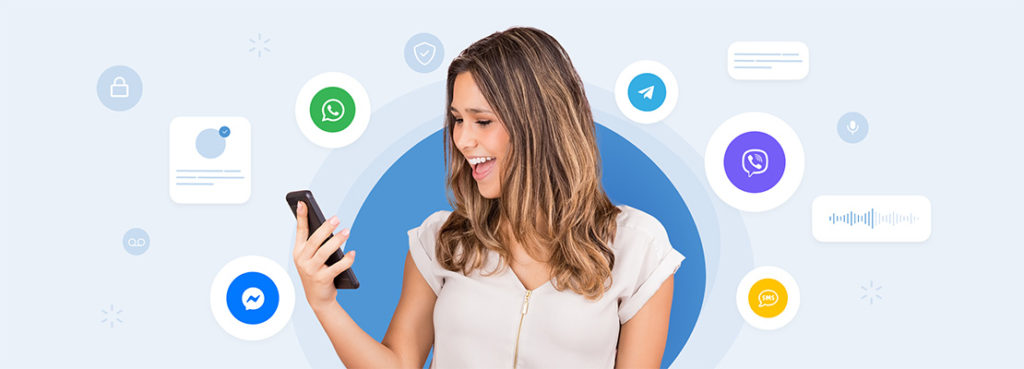
Going even one day without omnichannel messaging is nearly impossible today. Everyone now owns a smartphone and uses at least one actively. It’s an integral part of modern life, without doubt. However, regardless of smartphone users’ age and background, they are still mainly used for texting and multimedia messaging. Therefore, any business aiming to stay relevant among today’s consumers absolutely must make the most use of omnichannel messaging.
A2P (application-to-person) messaging service providers (SMS, WhatsApp, Viber, Facebook Messenger, RCS, Instagram, Telegram, WeChat, Signal, KakaoTalk, LINE, and others) have caught on to this trend and, as a result, saturated the market. Messaging users today are scattered across all the mentioned channels. On top of that, nearly all of them use more than one channel at once.
The limited, or rather non-existing, interoperability between different channels makes it difficult for businesses to switch communication between them. And being present on all channels is a must-have for any business today. In reality, the only way to achieve this is by implementing an omnichannel platform that ties all channels together in one central touchpoint. However, the market currently offers only a few of such platforms that successfully integrate multichannel interoperability into a seamless, easy-to-use solution.
What are the benefits of an omnichannel platform?
When businesses attempt to integrate multiple channels into their messaging strategy, it usually results in loads of wasted time. Not only for themselves, but also for their partners, and their customers. And time is money. This old saying is more relevant than ever for almost any business today. Think of how much time and resources could be saved if each of the following actions were entirely automatized:
- Internal and external business communication (infinite email ping-pong)
- Providing timely real-time notifications and updates (delivery confirmations, account updates, changes in time tables, etc.)
- Providing customer support and instant answers to frequently asked questions
- Customer retargeting (upselling, back in stock alerts, abandoned cart reminders, promotions, discounts)
- Customer onboarding and sign-ups
- Identity verification and authorization
- Boosting productivity by sending time-critical reminders and requests
- Scheduling appointments, audits and meetings
- A multitude of other possibilities. The sky is the limit!
When it comes to modern B2C and B2B2C businesses, the entire communication framework now depends on instant messaging. Any little hiccup in communication can cause severe headaches for managers and customers, eventually resulting in real financial loss. Because of that, omnichannel messaging can be a huge money saver for businesses.
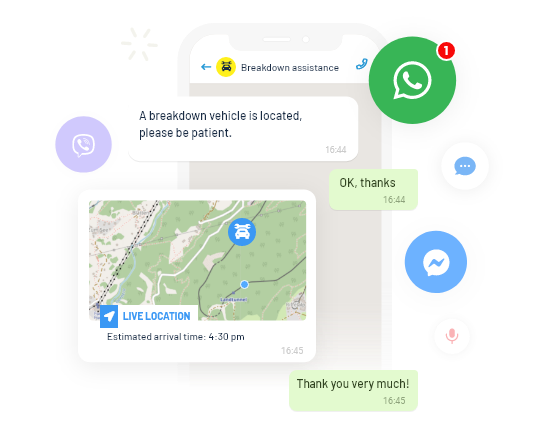
Let’s say a customer reaches out to your business via email. He doesn’t get an instant reply. To prompt faster feedback, he sends a message to your Facebook page. Already, this is a problem. You have to obtain access to your email, search for the email in question, and go back to Facebook to continue the conversation. Perhaps you also have to share some files with the customer, which is more convenient via email. This situation urges you to ping-pong between email and Facebook, slowing down the entire process. And creating a poor customer experience overall.
Today’s end-users are used to getting everything they want in an instant. To them, time is a precious resource, more valuable than ever. Also, it’s not that they prefer convenience anymore—they absolutely demand it. They expect every interaction with a brand to be fast and flawless. Otherwise, they will take their business elsewhere. To meet the ever-growing needs of customers, companies must focus on creating an optimal omnichannel experience on customers’ preferred communication channels.
This is where omnichannel platforms come in as the perfect solution: they provide an overview of all the communication running through each operating channel on one central platform. By doing so, they enable unified, seamless, and personalized communication across various messaging channels. As a result, customer service agents have access to the entire interaction history, whatever touchpoints are in use. Also, they get a full context of every customer journey instead of juggling between a website, business app, and other touchpoints.
Let’s observe more use cases of omnichannel messaging
- Lifting the burden off customer support, i.e. allowing businesses to monitor and respond to customer inquiries and resolve issues quickly, regardless of the communication channel they use. This improves customer satisfaction and helps in reducing the time and resources that a business needs to spend on customer support
- Customer management. These platforms can help businesses manage customer interactions and keep track of customer requests, which can save time and improve the customer experience
- Omnichannel communication can be used for sending promotions, discounts, and other offers to customers, which can increase sales and revenue, as well as boost customer loyalty. In addition, it helps to better understand customer preferences and needs, which can inform future marketing and product development efforts
- Sharing documents and files—instant messaging platforms support multimedia sharing, allowing users to collaborate and share information without having to send emails or set up separate file-sharing systems
- Real-time updates. It allows users to receive updates and time-critical notifications in real-time, while facilitating an instant transfer of the desired information. It’s a key driver behind efficient communication and a time-saver that reduces the need for constant email checking and phone calls
- Troubleshooting and problem-solving. Allowing users to quickly and easily ask for help or advice dramatically reduces the time spent on trying to solve problems independently
- It provides a more personal and direct form of communication, which can help build stronger relationships with customers
- Streamlining internal communication. It allows employees to communicate with each other quickly and efficiently, without having to stop what they are doing to make a phone call or send an email. This can help to reduce interruptions and increase productivity
Because of this, omnichannel messaging has quickly become one of the most important technological areas that drive automation, agility and digitization within any B2C and B2B business. It is instrumental in all internal and external processes as much as it’s a deciding factor in attracting new customers.
Over the past few decades, advances in messaging technology have constantly altered the way businesses communicate with their customers. This is best observed in broadcast messaging platforms, which are applications that allow sending mass messages or notifications to a large group of users at once. These platforms are often used for marketing purposes—to send updates, announcements, and promotion offers to customers, or to disseminate important information to a large audience.
What makes modern broadcasting platforms competitive today is their simple interfaces that can be used by employees of any skill levels for various operations such as sending campaigns, handling communication, performance tracking, etc. Due to their increased accessibility and numerous benefits, more and more small businesses are leveraging broadcasting platforms.
Thinking of adopting your first omnichannel solution? Here are the next steps.
If you are a business looking to implement an omnichannel messaging solution, there are two ways of going about it: by yourself or through partnering with a messaging channel provider. The do-it-yourself route will likely prove to be a challenging task. This is because it requires you to have a deep understanding of various messaging channels, as well as having the resources and expertise to integrate them seamlessly.
Let’s take a closer look at the main challenges you, as a business, may face when carrying out omnichannel implementation on your own. Also, let’s see how to overcome them through partnering with a messaging channel provider.
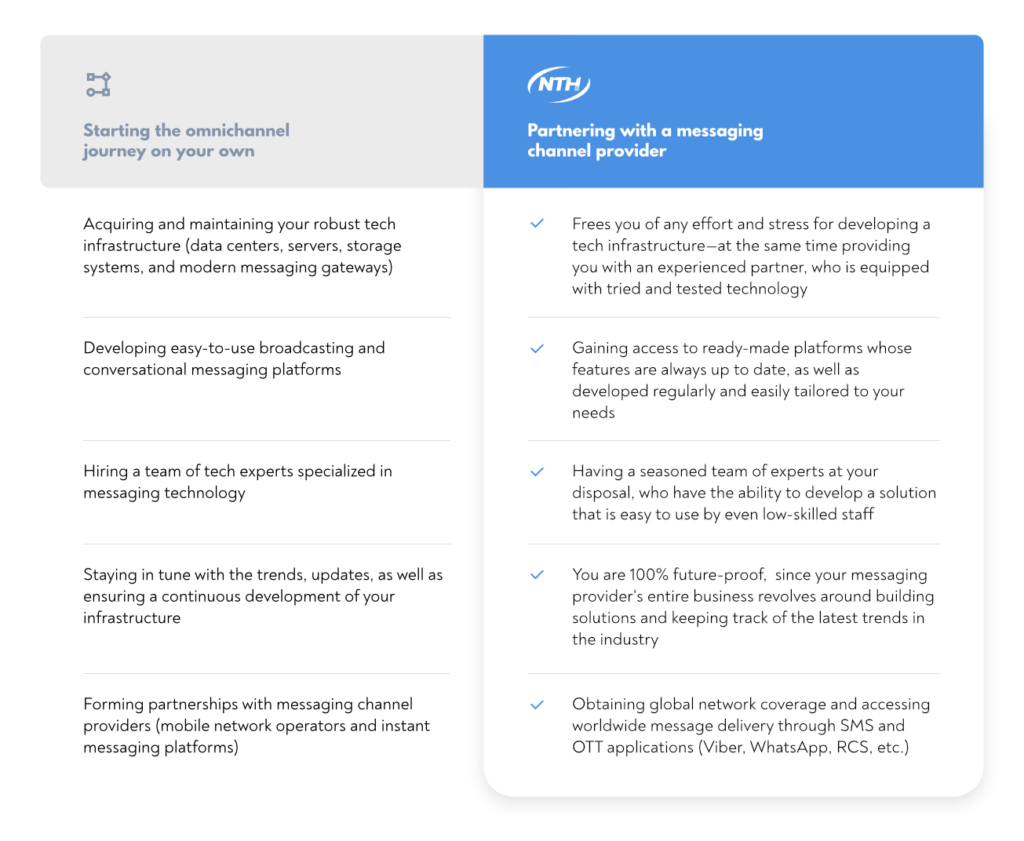
Having a partner who can provide a proven, reliable solution makes this journey significantly more manageable. Also, a partnership can greatly reduce certain risks that the implementation procedure carries, like wasting loads of time and budget. In addition, this allows you to concentrate on other aspects of your business. Your partner’s expertise and their global network coverage, as well as their on-demand services, will be at your disposal. As a result, you won’t have to worry about any technology-related issues.
As a customer, how can you make use of omnichannel messaging?
At NTH, we make it a priority to meet the needs of our business customers. We do this by providing omnichannel solutions in the most accessible and adaptable way. Our goal is to make it easy for businesses to have omnichannel capabilities and tailor them to meet their specific needs.
Here are some ways in which this can be utilized:
- Via API—a single API which allows you to seamlessly integrate two-way omnichannel communication into your existing platforms across all channels—WhatsApp, SMS, Viber, Telegram,… You name it.
- Through ready-made omnichannel platforms. NTH offers two such dedicated platforms:
- OmniCampaign – an omnichannel broadcasting platform that allows you to create, execute, and monitor mobile marketing campaigns
- OmniDialog – a cloud-based contact center that provides you with a single central interface for interacting with partners and customers through multiple channels
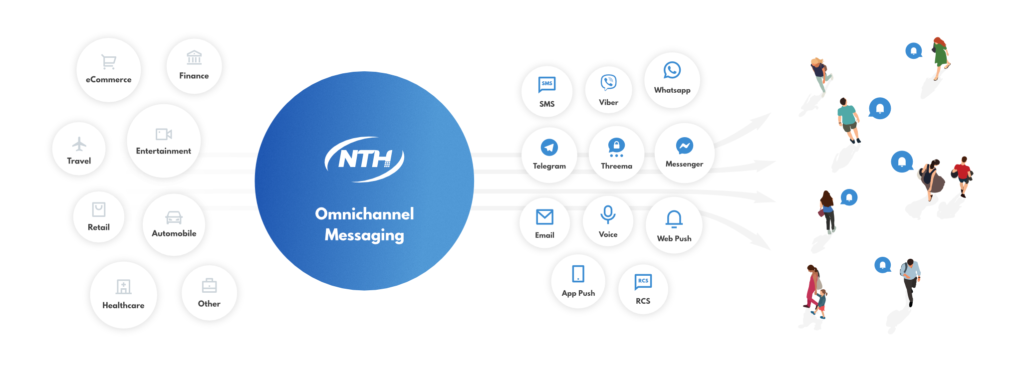
Thinking of adopting your first omnichannel messaging solution? Look no further. We’ll fill you in on everything you need to know in order to get started.
Across the entire globe there are only a handful of providers who offer an all-in-one omnichannel messaging platform. One of them is NTH, a worldwide-trusted messaging provider with over 20 years of experience in business messaging.
Why choose NTH as your omnichannel messaging partner?
- Offers one of the most advanced ready-made omnichannel solutions
- In-depth knowledge and integration of mobile communication channels
- Official partner of WhatsApp and Viber
- Direct connections with global mobile network operators
- Capability of delivering marketing campaigns in high capacity
- Technical and business support
- White label platforms
- Readiness to provide tailor-made customization
If you are interested in a free consultation, or simply finding out more about our omnichannel platform, feel free to reach out on LinkedIn or via email.

